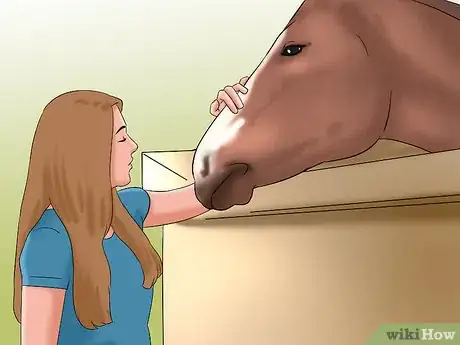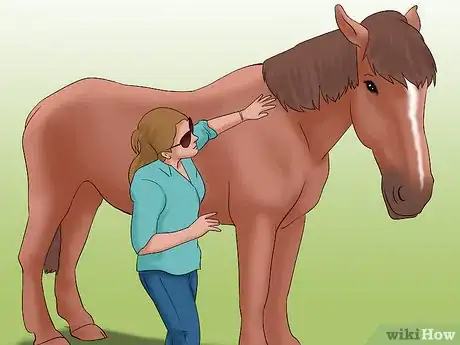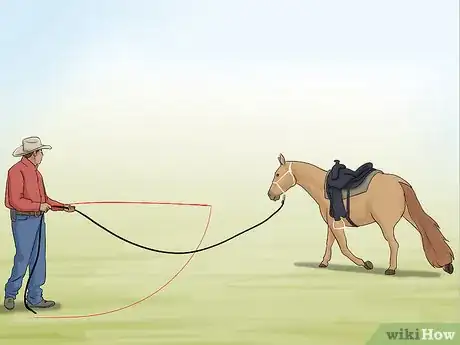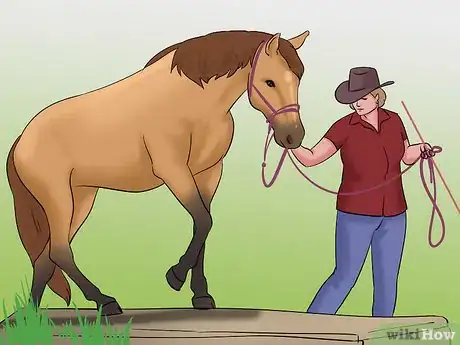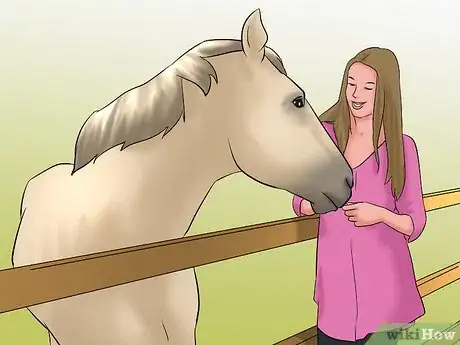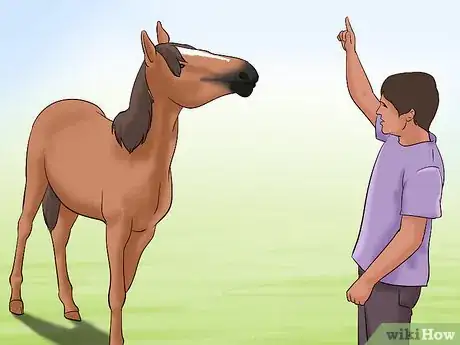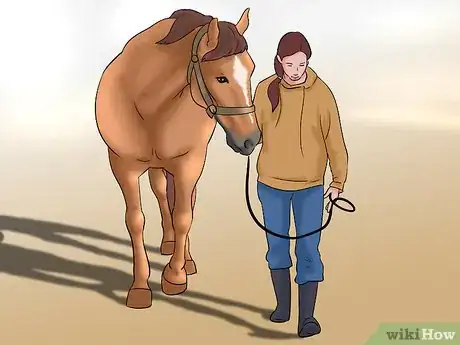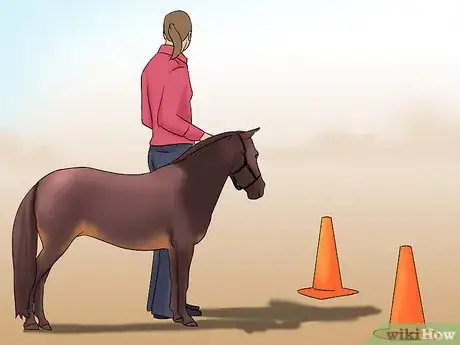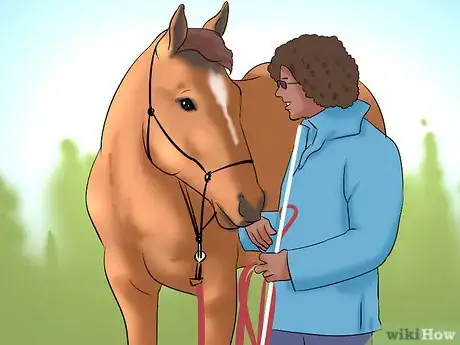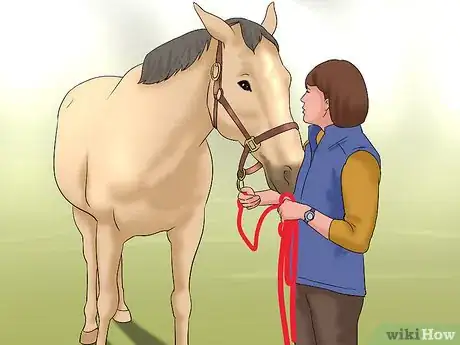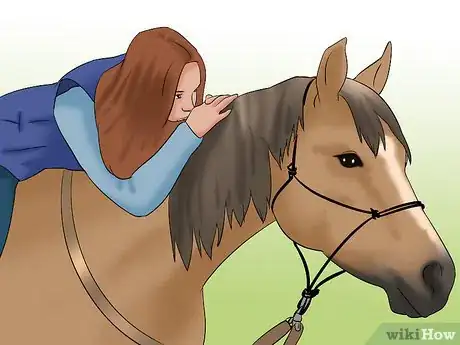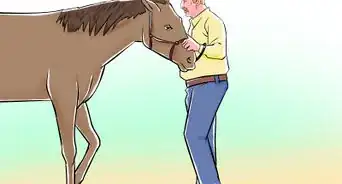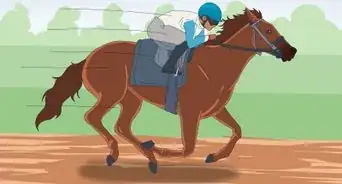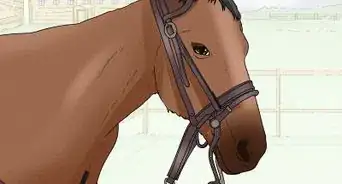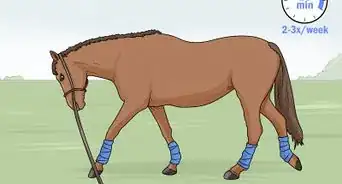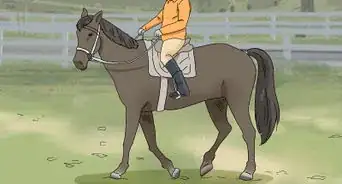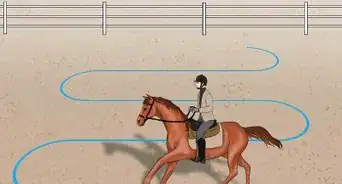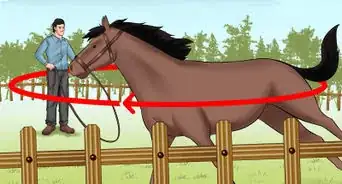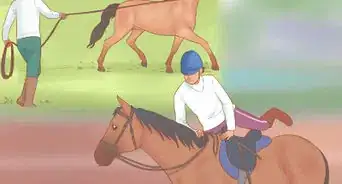X
wikiHow is a “wiki,” similar to Wikipedia, which means that many of our articles are co-written by multiple authors. To create this article, volunteer authors worked to edit and improve it over time.
This article has been viewed 20,821 times.
Learn more...
Liberty horsemanship is a form of horsemanship in which the horse and rider are viewed as equal, in a sense, of course not allowing the horse to take control. Liberty horsemanship is performed without whips, crops, bits, or spurs; even saddles are not recommended, and other such measures of force. This form of horsemanship takes time, but it will result in a strong, true and free bond with your horse.
Steps
Part 1
Part 1 of 3:
Getting Started
-
1Spend time getting to know your horse. Find out what your horse seems to take interest in doing. Spend time without riding, just loving on and grooming, and walking with your horse.
-
2Turn your horse out into a large enclosed arena or pasture and watch his movements. Send good and happy messages to your horse.
- Try sitting on the ground a good distance from your horse and wait for him or her to come over to you.
Advertisement -
3Talk to your horse. In particular, talk in your "happy voice". Horses can sense human emotions and recognize how humans feel by viewing the body language. This is why it's so important to always angle yourself so as to avoid giving the impression of predatory behavior.
-
4Understand when your horse wants space, and make sure your horse understands your boundaries.
-
5Make sure your horse is aware of the fact that you call the shots. This doesn't mean using a whip or yelling when your horse does something wrong. It means using a firm voice to say "no" and asking the horse to try again.
-
6Teach basic commands. The horse needs to understand such commands as: Come here, stop, turn away, and focus. Most importantly, the horse needs to understand how to move his or her feet on command.
Advertisement
Part 2
Part 2 of 3:
Beginning Work at Liberty
-
1Don't jump straight into riding. Instead, interact in other fruitful ways. At all times, make sure your horse is comfortable before you try new things, as it can be very scary for the horse.
-
2Try teaching the horse some easy tricks. This is fun for the horse and can be a nice mix of from the usual routine. Some fun tricks include: kiss, paw, bow, smile, etc.
- Always start with small tricks. Don't attempt harder tricks until you are positive that the horse can handle it and has absolute trust in you.
-
3Work on leading your horse with a neck rope or a loose rope halter.
- Don't force the horse to walk but don't let the horse not do it.
- Bring treats as a reward, but don't make it so the horse is working for treats. This means using them sparingly, if at all.
-
4Once you have accomplished getting the horse to lead with you at your side, without you needing to pull or constantly ask, take off the rope and start working with him without the rope. It may take time to get to this point so just keep working and the horse will learn. Just work at a walk, so you are not throwing too many things at the horse at once.
-
5When you feel you are connected with your horse more, try riding again. Just do light riding and learn how to feel and move with your horse. Riding bareback is a physical connection for the rider and horse.
-
6Try having the horse walk with you around cones and over poles. You could even try trotting and cantering with him. After you have been doing liberty with you horse for a year or more, it's likely that you'll both be comfortable playing tag and chasing each other around!
Advertisement
Part 3
Part 3 of 3:
Achieving liberty
-
1Notice the change over time. There is no certain point in which your horse is at liberty with you. Similar to many religions, this is a spiritual level. Your horse needs to be at one with you.
-
2When you feel you are comfortable with where you are with your horse, stretch the boundaries, to achieve more. You can never be fully finished working with your horse. There are always new possibilities.
-
3Continue striving to make a good bond. The whole goal here is to achieve a strong bond with your horse; the goal is not to worry what other people think about it. This is about growing a spiritual, physical, and mental connection with your horse.
- You need to understand that you won't ever be doing this the wrong way; it is your decision and there is no strict way to do it.
Advertisement
Warnings
- Liberty is a commitment so make sure it is what you want before beginning.⧼thumbs_response⧽
- Wear a helmet without fail. It doesn't make you any cooler to not wear a helmet. Helmets help prevent so many injuries.⧼thumbs_response⧽
- Liberty horsemanship gives the horse more power than in traditional horsemanship, so be careful and understand how to control the horse without to much force.⧼thumbs_response⧽
Advertisement
About This Article
Advertisement
